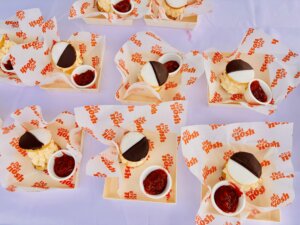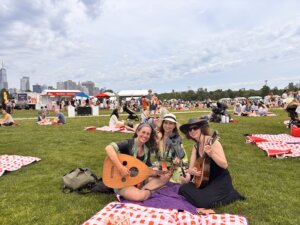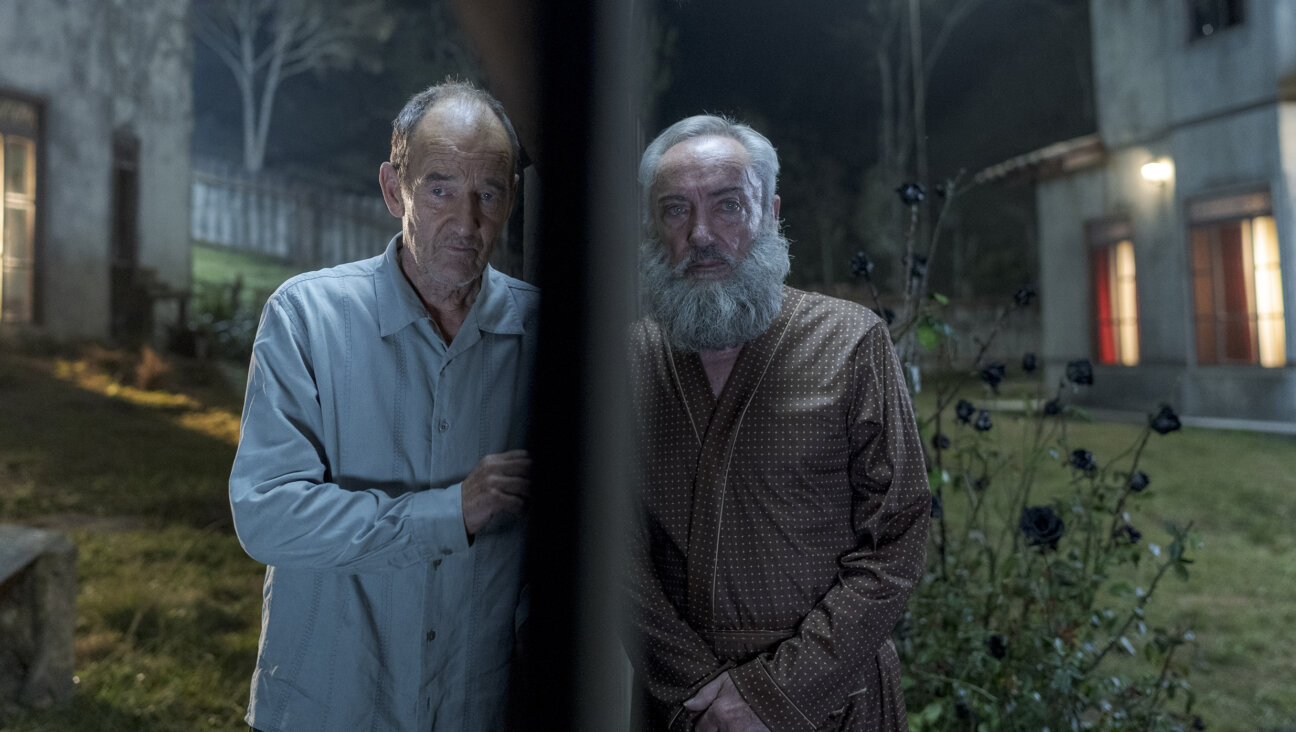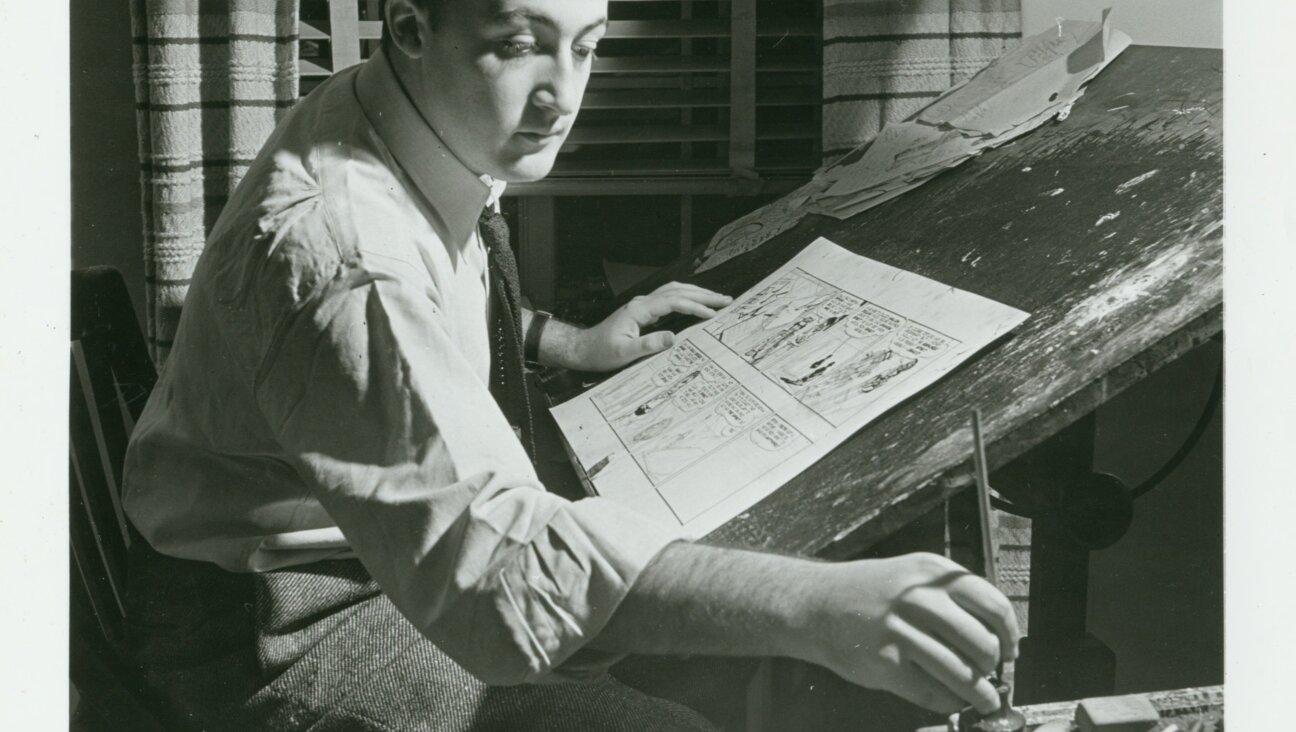Like Jews of yore, huddled masses gather upon an island, yearning to breathe free and eat good food
On Governors Island, The Great Nosh reimagined the classics and provided a break from the tsuris

Photo by Ken Goodman
It is a warm, wet morning in June, and we Jews (and some Gentiles, too) are standing on the bow of a ship. The Statue of Liberty rises to our right, the foggy peaks of Brooklyn to our left. We are heading towards a land flowing with milk and honey. A land flowing with banchan bialys, corned beef roti Reubens, and bagel-themed ice-cream sandwiches. Our destination: Governor’s Island. We are going to a Jewish fusion fest, a fest that professes to be “New York’s Hottest Summer Picnic Party.” We are going to The Great Nosh.
By 11 a.m., the scene is thumping. Chicken schnitzel sizzles. Skin cells crisp beneath the sun. A pop playlist spanning multiple decades pulsates out of massive speakers, allowing noshers to relive many generations of bar and bat-mitzvah parties at once. There is a biblical flavor in the air — we are 2,000 people who have congregated in a remote location to eat food on the ground, surrounded by tents. We are reliving the times of Moses!
But if the problem of our Exodus-era ancestors was a lack of options (quail or manna), then ours is just the opposite — in a loose ring across the green are 12 pop-up restaurant tents, 12 shidduchim that Naama Shefi, the founder of the Jewish Food Society and organizer of the Nosh, has made among more than 20 of New York City’s Jewish and non-Jewish restaurants. These arranged marriages produce delicious offspring — the “marbled rye roti reuben” combines Katz’s Deli’s corned beef with the bamboo kraut, Phuket Island sauce, and mango slaw of Thai Diner. Elbow Bread and Sunn’s give birth to the banchan bialy, a classic bialy stuffed with the smoked eggplant, kimchi, and garlicky cucumbers of traditional Korean banchan.

Junior’s gets together with pastry chef Caroline Schiff and sandwiches cheesecake between two black-and-white cookies, with a little pot of cherry jam on the side.
This is evolution in action — Jewish culinary traditions surviving because they are changing, absorbing new flavors and adapting to the times. I wonder what hungry Jews one hundred years ago would have thought if they had tried a banchan bialy — would they even recognize it?
After surveying the options, I prepare to do what my people do best — nosh. Preferably to excess. I start off strong with “Schnitz and Chips,” a Jewish take on a British classic by K’Far Brooklyn, an Israeli restaurant based in Williamsburg, and Dame, an English seafood restaurant in Greenwich Village. The schnitzel is hot and juicy, with a crispy carapace that clings to the tender meat. The “proper English chips” are crisp pockets of starchiness. The tehina and schug on the side give them a rebellious flare.

I take my schnitz and chips to an open patch of grass and spread out my orange gingham Great Nosh picnic blanket, intending to glut myself in solitude. But no sooner have I settled down than some deeply ingrained survival instinct compels me to look up, and I find that three women carrying instruments have materialized before me.
“Hello!” says the one with the headband. “Can we sit with you and play a few songs?”
They set down their blanket beside mine and introduce themselves — Basya Schechter singing and playing the oud, Meg Okura on the violin, and Yula Beeri singing and playing the mandola.
They first play a Greek folk song and then a variation on “Shir Hashirim,” the Song of Songs. Their voices are full and beautiful. Three muses serenading me on an island as I feast on chicken — is this a scene out of The Odyssey?

Such miracles are possible at the Great Nosh. Whether it is because of the food or the music or the sunshine, people seem to be cracking their spiritual windows open a little wider than usual, and letting the world pour in.
It is nice to remember that some things are universal. Even in the sunshine, I can’t help but recall something I’d seen that morning on my way to the ferry — pasted on a concrete barrier, the scraped-away remnants of a poster that had unmistakably read “the great genocide” in the same puffy, white, marshmallow letters of advertisements for the Nosh. Why somebody would devote their estimable graphic art skills to condemning bagels was not only exhausting to consider, but distressing. I had gotten on the ferry, a very different boat at a very different time than that of my ancestors, but with the same old hope of finding a place where I could be a Jew in peace.
The Great Nosh, with its abundance of fresh food and greenery, would provide a few hours of sanctuary from the usual tsuris. This urban outpost of Eden would only last a few hours — it would be important to enjoy it.

I go visit the Old Jewish Men of New York, who have set up camp at their own picnic table, where activities include chess, light schmoozing in Yiddish, arm wrestling, and solid life advice. Bob, who wears his OJM baseball cap with pride, divulges to me the secret to success with women: “Treat ’em like you would treat everybody else. But you still be a gentleman! Women like gentlemen!”
I purchase a delicious bagel-and-schmear themed ice cream sandwich from Russ & Daughters and Morgenstern’s — raspberry cream cheese ice cream snugly settled between two oatmeal cookies, rolled on the sides with the salty grit of everything bagel mix.

I savor it in the shade of Grandma’s Tent, where a rugelach-making demo is in progress. At halftime, people emerge with trays of the chocolatey goodness, which unfortunately I must decline, because I have eaten to the point of popping.
Bloated like an overinflated basketball, I bounce back down the hill to Soissons Landing. When the ferry comes, I join a few other sweaty, satisfied noshers on the deck of the ship, where we can lean against the railing and look out at the Statue of Liberty just as I imagine many of our ancestors did when they came to this country. I wonder if they could have imagined the world of their descendants, its abundance, its troubles, its banchan bialys. I think they would have been amazed.














